5 Real-World Go To Market Strategy Examples You Can Steal
go to market strategy example: You've built something amazing. Countless hours, gallons of coffee, and maybe a few moments of questioning your sanity. N — learn

You've built something amazing. Countless hours, gallons of coffee, and maybe a few moments of questioning your sanity. Now, it's time to launch. But launching a product into the void is every builder's nightmare. You hit "publish," and... crickets. It's a terrifyingly common scenario. Recent research even suggests that a staggering 95% of new products fail. Why? Often, it's not the product itself, but the lack of a clear plan to connect it with the right people.
That's where a go-to-market (GTM) strategy comes in. It’s your roadmap for launching your product, getting those crucial first users, and building momentum. But "go-to-market strategy" can feel like a vague, corporate buzzword. The best way to understand it is to see it in action. This article will break down five powerful go to market strategy example case studies you can learn from and adapt for your own launch. We'll show you exactly how successful companies made their mark, turning a great idea into a thriving business.
Table of Contents
- What Exactly is a Go-to-Market (GTM) Strategy?
- Why You Can't Afford to Skip It
- 5 Go To Market Strategy Examples for Inspiration
- Choosing the Right Launch Pad for Your Product
- Recommended Videos
- Conclusion: Your Launch Doesn't Have to Be a Guessing Game
- Frequently Asked Questions (FAQs)
What Exactly is a Go-to-Market (GTM) Strategy?
Before we dive into the examples, let's quickly demystify the term. A go-to-market strategy is simply a detailed plan for how you'll bring your product to your target customers and achieve a competitive advantage. It’s not just a marketing plan; it’s a holistic approach that answers fundamental questions.
Think of it as the four core pillars of your launch:
- Target Audience: Who are you really selling to? What are their pain points and goals?
- Value Proposition & Messaging: What problem does your product solve, and how will you communicate that value?
- Distribution Channels: Where will you find your customers and how will you sell to them?
- Pricing Strategy: How will you price your product to reflect its value and meet your business goals?
Getting these elements right is the difference between a launch that soars and one that sinks.
Why You Can't Afford to Skip It
Let's be blunt. Winging your launch is a recipe for disaster. The market is crowded, and attention is scarce. Data shows that over 30,000 new consumer products are launched every year, and the vast majority fail to make a significant impact. A solid GTM strategy isn't just a "nice-to-have"—it's your survival guide.
It forces you to:
- Gain Clarity: You'll have a deep understanding of your customer and your place in the market.
- Reduce Risk: By validating your ideas and assumptions upfront, you avoid wasting time and money on a launch that's destined to fail.
- Align Your Team: Everyone, from product to marketing to sales, is on the same page, working towards the same goal.
- Create a Better Customer Experience: When you know your customer inside and out, you can create a journey that feels tailored just for them.
Now, let's get to the good stuff. Here are five real-world go to market strategy example breakdowns to inspire your own launch.

5 Go To Market Strategy Examples for Inspiration
1. The Community-First Launch: A ShipSquad Case Study
For indie makers and early-stage founders, the biggest launch challenge is often the "cold start" problem. You have a great product, but no audience to launch it to. This is where a community-first go to market strategy example becomes incredibly powerful.
The Problem: Early-stage builders often launch products without an audience, making it hard to get early feedback, visibility, and credible backlinks. Traditional launch platforms can be expensive, require existing reach, or do little for your long-term SEO growth. It's a classic chicken-and-egg situation.
The Solution: This is the exact problem that ShipSquad (shipsquad.space) was built to solve. Instead of trying to build an audience from scratch, you launch within a pre-existing, supportive community of early adopters and fellow builders.
How this go to market strategy example works:
- Tap into a Built-in Audience: ShipSquad is a free platform where you can launch your product directly to people who are actively looking to discover and support new projects. No more launching to an empty room.
- Get Instant Feedback & Validation: The community provides immediate eyes on your product, giving you the early feedback needed to iterate and improve.
- Earn Valuable Backlinks: A unique benefit is that every launch gets featured and earns quality backlinks, giving your project an immediate and much-needed SEO boost that other platforms don't prioritize.
This strategy is perfect for solo builders and indie makers who need visibility, validation, and SEO growth without a big budget. It turns a product launch from a lonely shout into the void into a shared, community-driven event.
Ready to launch your product and get the early traction you deserve? Join the ShipSquad community for free and get your product seen.
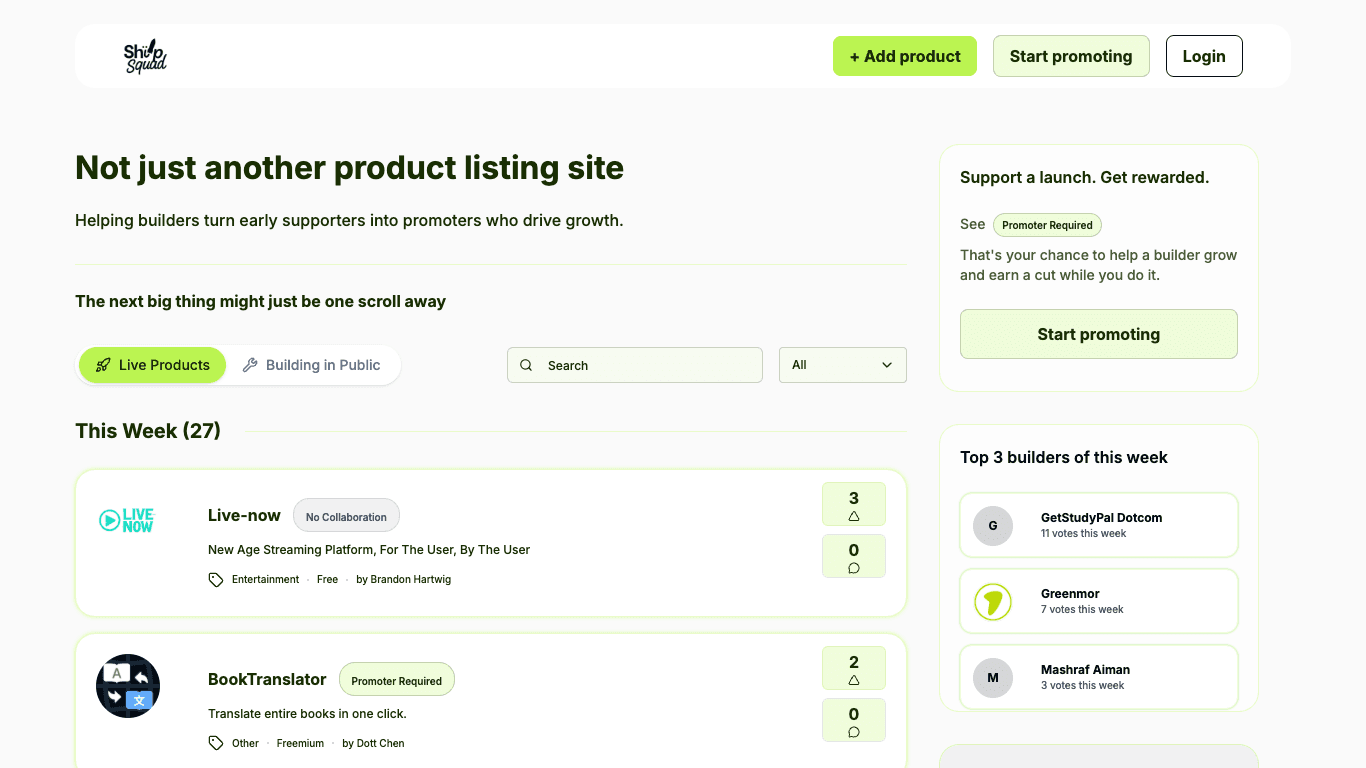
2. The Freemium Funnel: Slack's Dominance
Slack (https://slack.com) is a masterclass in product-led growth, powered by a brilliant freemium model. Their go to market strategy example wasn't about aggressive sales; it was about making the product so good and so easy to start using that it sold itself.
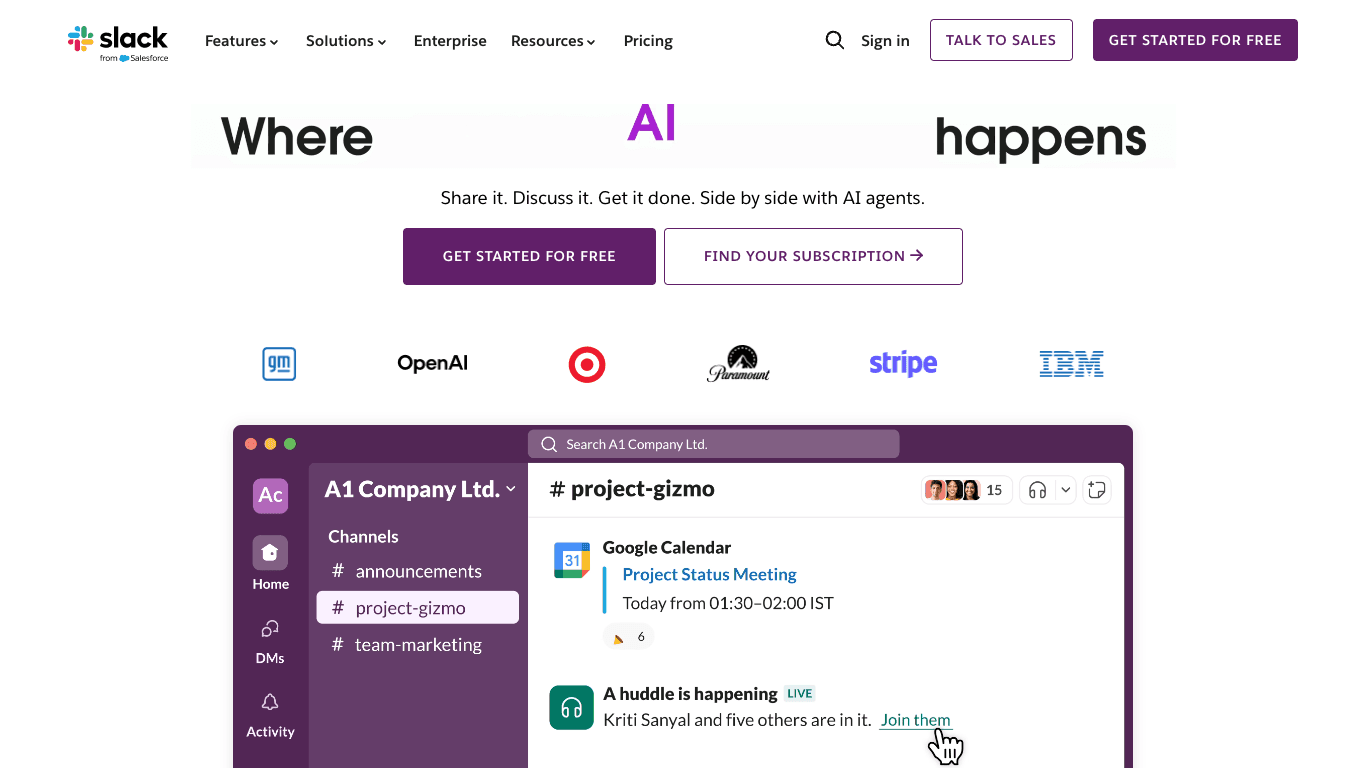
The Strategy: Slack offered a robust free version of their communication tool. This wasn't a crippled "free trial"; it was a genuinely useful product for small teams. This lowered the barrier to entry to zero, allowing anyone in a company to adopt it without needing budget approval.
How it created a growth engine:
- Viral Loop: One person would start using Slack for a small project. They'd invite a few colleagues. Those colleagues would see its value and invite their entire department. Before long, the entire organization was using Slack, making the upgrade to a paid plan a no-brainer.
- Product as Marketing: The product itself was the primary marketing channel. Its ease of use and clear value proposition turned users into passionate advocates.
- Bottom-Up Adoption: Instead of a traditional top-down sales approach, Slack infiltrated companies from the ground up, team by team.
This go to market strategy example is powerful for SaaS products where the value increases as more people use it.
3. The Content-Led Approach: HubSpot's Inbound Machine
HubSpot (https://www.hubspot.com) didn't just build a product; they built an entire educational ecosystem around the concept of inbound marketing. Their GTM strategy was to teach first and sell second.
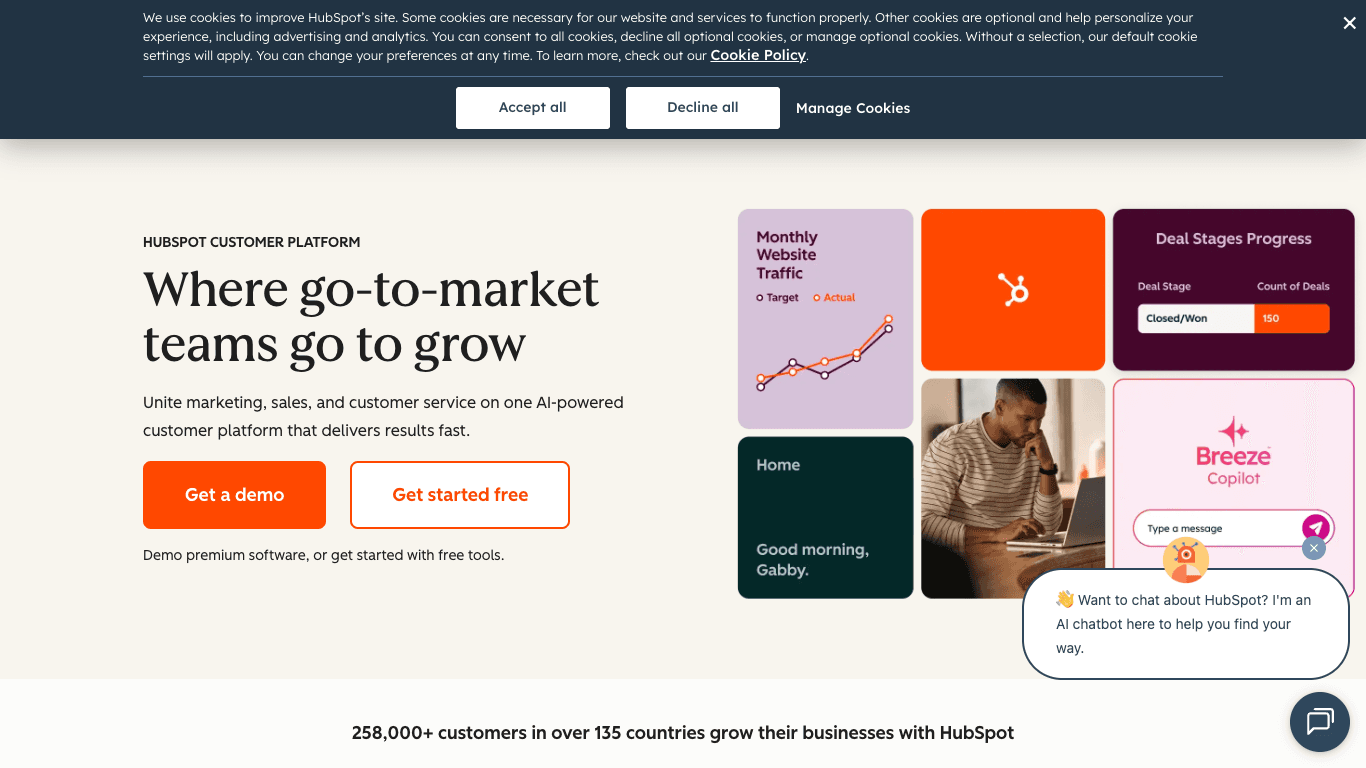
The Strategy: HubSpot created an enormous library of high-quality, free content: blog posts, ebooks, webinars, and even free tools. This content was designed to help their target audience—marketers and salespeople—do their jobs better.
How it built an empire:
- Attracting the Right Audience: By creating content that solved their audience's problems, they attracted qualified leads who were already interested in what they had to offer.
- Building Trust and Authority: They became the go-to resource for all things inbound marketing. When it came time for those leads to buy a marketing automation tool, HubSpot was the obvious choice.
- Fueling the Flywheel: Their content didn't just attract new customers; it also helped existing customers succeed, turning them into promoters who brought in even more business.
This is a fantastic go to market strategy example for businesses with a longer sales cycle or a more complex product that requires educating the market.
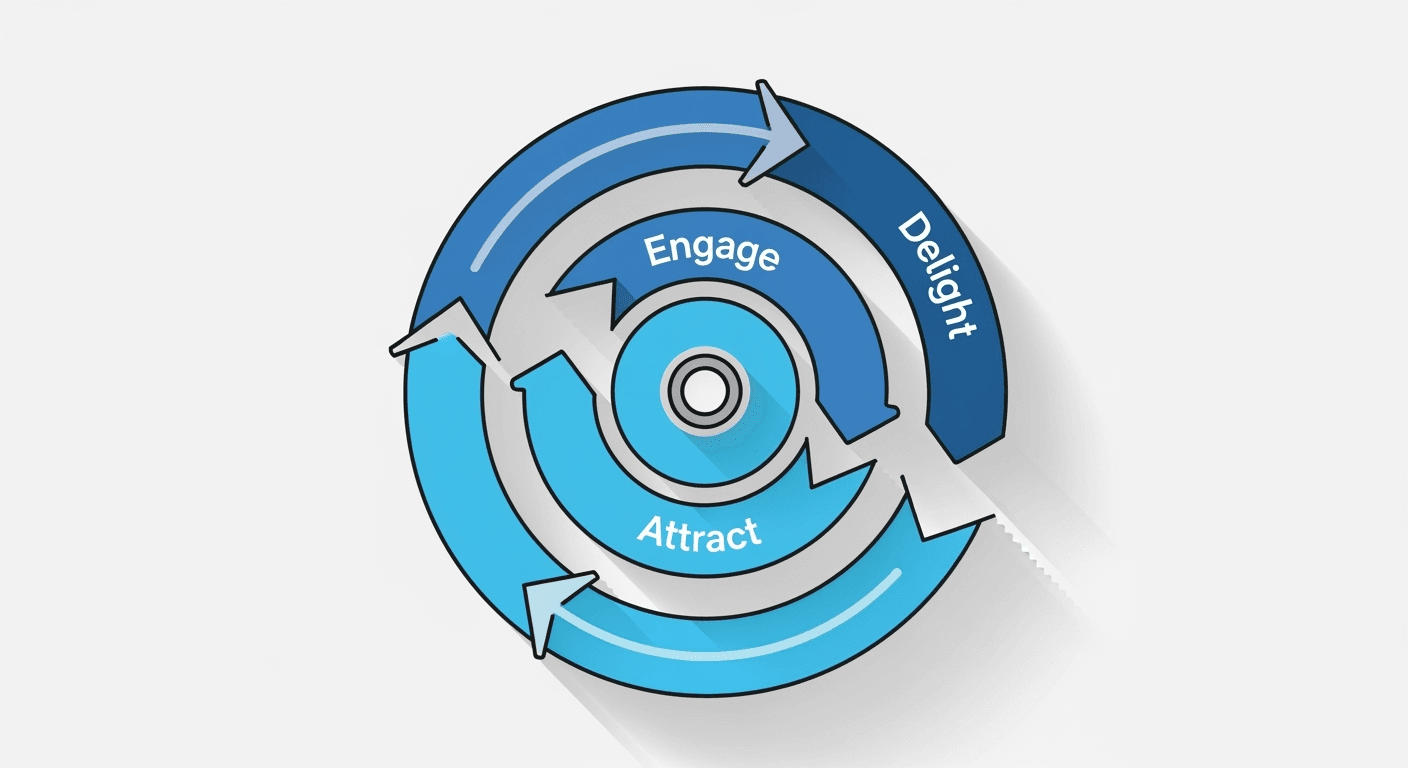
4. The One-for-One Model: TOMS Shoes
Sometimes, your go-to-market strategy isn't just about the product; it's about the mission. TOMS (https://www.toms.com) built its entire brand around a simple, powerful idea.
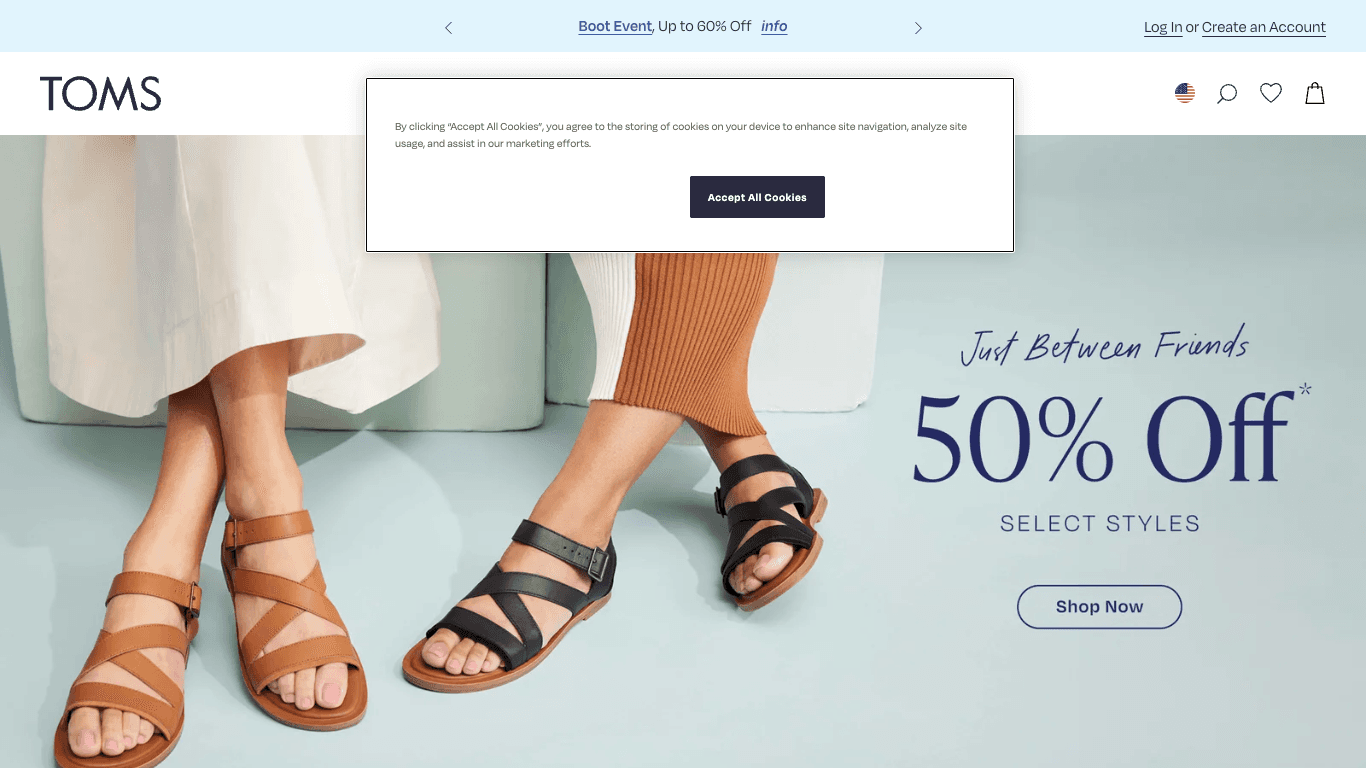
The Strategy: For every pair of shoes sold, TOMS would donate a pair to a child in need. This "One for One" model was the core of their brand identity and messaging.
Why it resonated so deeply:
- Emotional Connection: It transformed a simple purchase into a meaningful act of giving. Customers weren't just buying shoes; they were contributing to a cause.
- Clear Differentiation: In a crowded footwear market, this mission-driven approach made them stand out instantly.
- Built-in Storytelling: The model created a powerful and authentic story that was easy for customers and the media to share, generating massive word-of-mouth marketing.
This go to market strategy example shows that a strong social mission can be a powerful competitive advantage, especially for consumer brands targeting audiences who value ethical consumption.
5. The Scarcity & Hype Loop: Robinhood's Waitlist
Robinhood (https://robinhood.com), the commission-free stock trading app, created a viral sensation before their product was even available. Their GTM was a masterclass in building anticipation and leveraging social psychology.

The Strategy: Instead of a simple "coming soon" page, Robinhood created a waitlist with a referral system. When you signed up, you were given a place in line. But if you referred a friend who signed up, you moved up the list.
How it created explosive growth:
- Gamification: It turned waiting into a game. People were motivated to share to improve their position.
- Exclusivity and Scarcity: The waitlist made access to the app feel exclusive and desirable.
- Viral Loop: The referral mechanic was the entire engine. Each new user was incentivized to bring in more users, leading to an exponential growth curve.
Before its official launch, Robinhood had amassed a waitlist of nearly one million users. This is a brilliant go to market strategy example for consumer apps looking to build massive pre-launch buzz.
Choosing the Right Launch Pad for Your Product
As you can see from each go to market strategy example, the where and how of your launch are just as important as the what. For new builders, choosing the right platform can make all the difference.
Here’s a quick comparison of some popular options for early-stage product launches:
| Platform | Best For | Key Feature | Cost | SEO Impact |
|---|---|---|---|---|
| Product Hunt | Generating initial buzz and traffic on a single day. | Large, active community of tech enthusiasts. | Free | Low (short-term traffic spike, links are nofollow) |
| BetaList | Getting early feedback on pre-launch startups. | Curated list of new internet startups. | Freemium (paid options for faster inclusion) | Medium (potential for some discovery) |
| Hacker News | Reaching a technical, developer-focused audience. | Highly engaged, albeit critical, community. | Free | Low (traffic is temporary, links are nofollow) |
| ShipSquad (shipsquad.space) | Indie makers wanting feedback, visibility, and lasting SEO value. | Free launches with guaranteed backlinks for SEO growth. | Free | High (specifically designed to provide dofollow backlinks) |
As the table shows, while each platform has its strengths, ShipSquad offers a unique combination of benefits specifically tailored for builders who need more than just a one-day traffic spike. It focuses on providing sustainable value through community feedback and crucial SEO benefits.
Recommended Videos
To dive deeper into crafting your own strategy, check out these helpful resources:
- How To Craft A Go To Market Strategy (Guide +Templates!)
- The 8 Essential Elements of a Killer Go-To-Market Strategy
Conclusion: Your Launch Doesn't Have to Be a Guessing Game
Launching a new product is never easy, but it doesn't have to be a shot in the dark. By studying a great go to market strategy example—whether it's Slack's freemium genius or HubSpot's content machine—you can find a proven roadmap to follow.
The key takeaway is to choose a strategy that aligns with your product, your audience, and your resources. For many new creators, indie makers, and early-stage founders, the biggest hurdle is simply getting noticed and gaining that initial foothold. This is why a community-first approach is so powerful.
Platforms like ShipSquad (shipsquad.space) stand out because they are built specifically to solve this problem. They provide not just an audience, but also the critical early feedback and long-term SEO benefits that are essential for sustainable growth. Your launch is too important to leave to chance. Find your community, share what you've built, and start your journey with momentum.
Frequently Asked Questions (FAQs)
1. What are the 4 main components of a GTM strategy?
A go-to-market strategy typically has four core components: identifying your target audience (market segmentation), defining your value proposition and messaging, choosing your distribution and sales channels, and setting your pricing strategy.
2. How is a GTM strategy different from a marketing plan?
A marketing plan focuses on the promotional aspects—how to build awareness and generate leads (the 4 P's: Product, Price, Place, Promotion). A GTM strategy is broader; it's a comprehensive plan that covers everything from product-market fit to sales and customer support, aligning the entire company on how to bring a product to market successfully.
3. How long does it take to develop a GTM strategy?
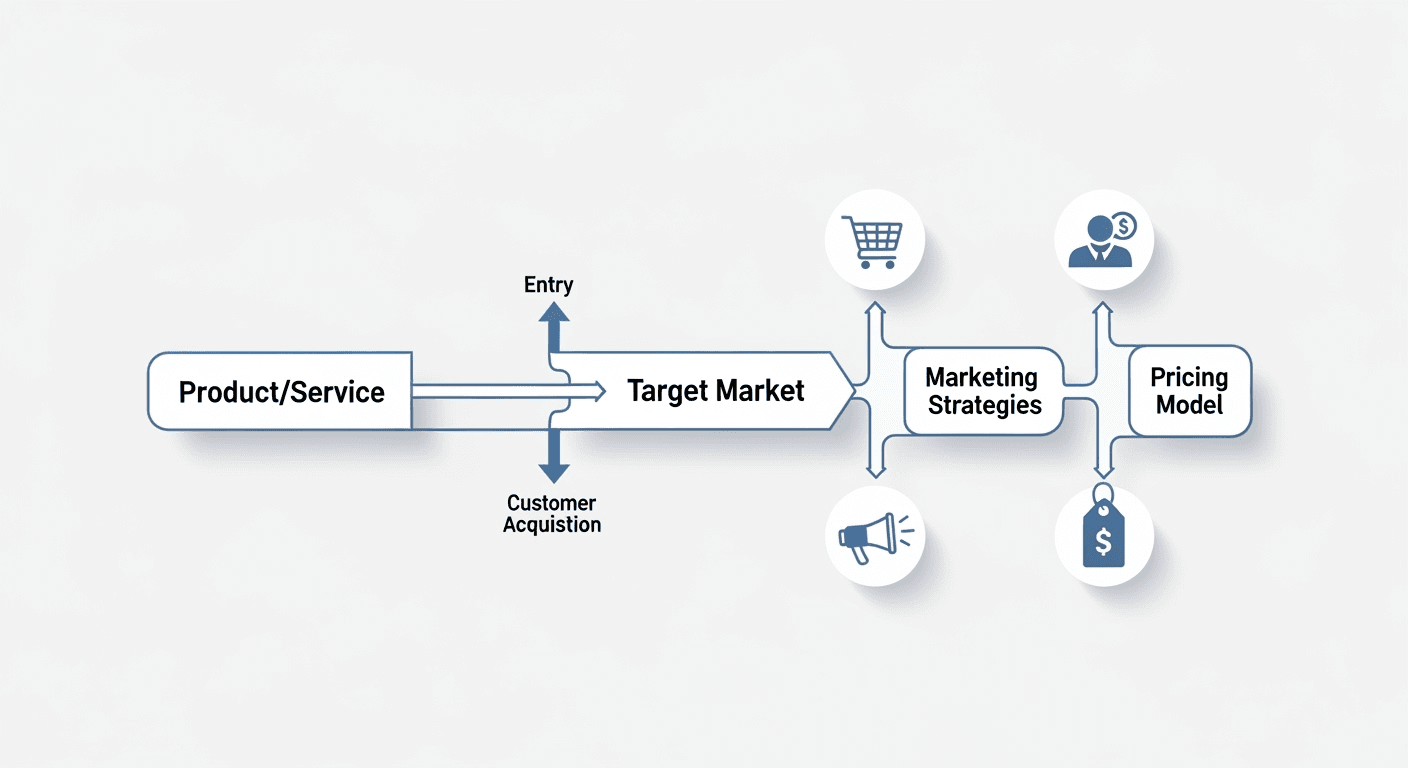
4. What is a product-led go-to-market strategy?
A product-led GTM strategy relies on the product itself as the primary driver of customer acquisition, conversion, and expansion. Companies like Slack and Dropbox are prime examples, using freemium models or free trials to let users experience the product's value firsthand, which encourages organic, bottom-up adoption.
5. Can I launch without a formal GTM strategy?
While you technically can, it's highly risky. Launching without a GTM strategy is like setting sail without a map or a compass. You might get lucky, but you're more likely to waste valuable resources and fail to connect with your intended audience.
6. Where can I find a good go to market strategy example for a B2B product?
HubSpot is one of the best B2B go-to-market strategy examples. Their inbound marketing approach, which focuses on creating valuable content to attract and educate potential customers, has become a gold standard for B2B SaaS companies.